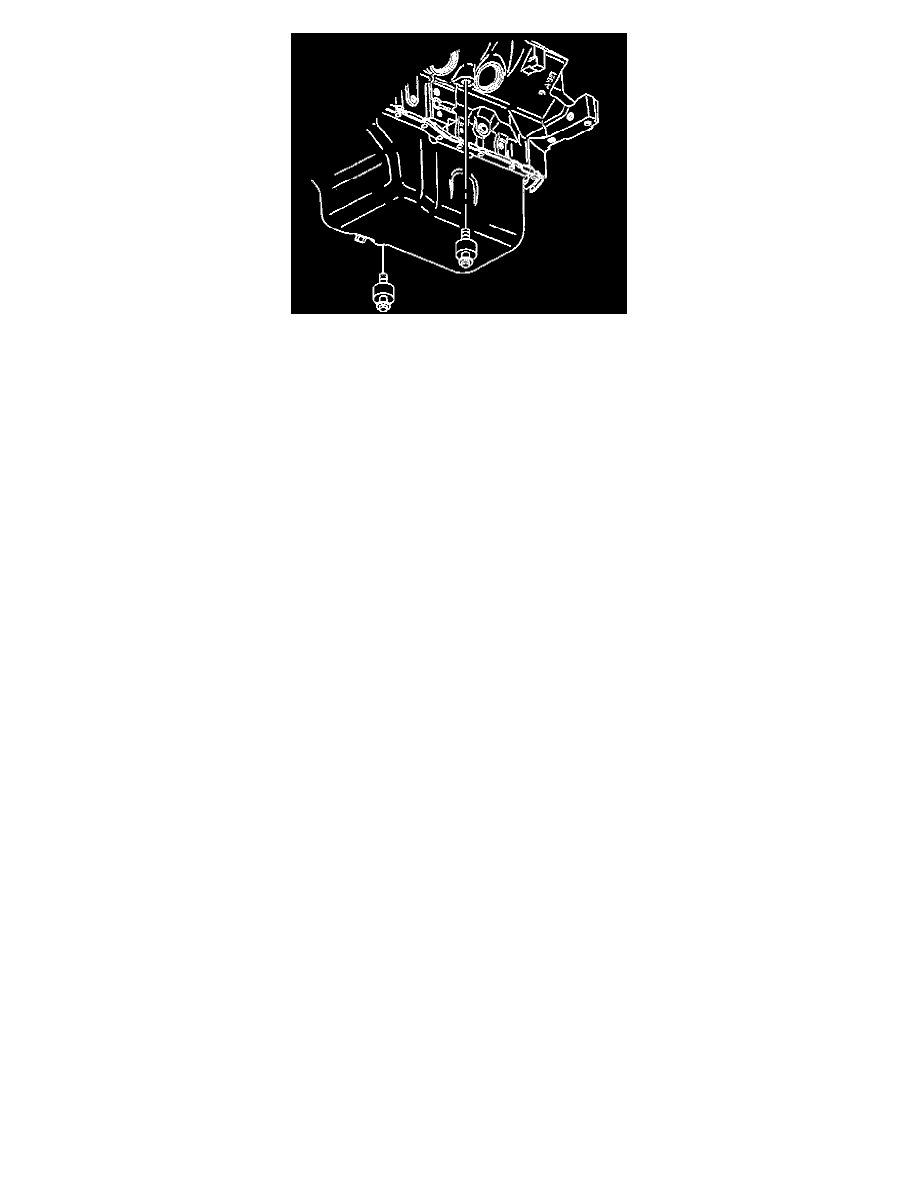Grand Prix V6-191 3.1L VIN M SFI (1998)

8. For the 3800 engine remove both block drains (knock sensors).
IMPORTANT: Dispose of used coolant in a proper fashion. Never pour used coolant down the drain. Ethylene glycol antifreeze is a very toxic
chemical; disposing of ethylene glycol antifreeze into the sewer system or ground water is both illegal and ecologically unsound.
9. Allow the coolant to drain completely.
FILLING PROCEDURE
1. Close the radiator drain valve.
2. Install all engine block drains.
3. If not done previously, remove the coolant recovery reservoir and empty. Flush the reservoir with clean water, drain and reinstall.
NOTICE: DO NOT use cooling system seal tabs (or similar compounds) unless otherwise instructed. The use of cooling system seal tabs (or
similar compounds) may restrict coolant flow through the passages of the cooling system or the engine components. Restricted coolant flow may
cause engine overheating and/or damage to the cooling system or the engine components/assembly.
IMPORTANT: If the cooling system is being refilled ONLY (no flush), a 50 percent ethylene glycol and 50 percent clean water mixture should
be used to fill the system. Fill the system until the level of the 50/50 mixture has reached the base of the radiator neck. Wait two minutes and
recheck the level of the coolant mixture, add a 50/50 ethylene glycol/water mixture as necessary to restore the coolant mixture level to the base of
the radiator neck.
4. Slowly fill the cooling system through the radiator neck using the following procedure:
4.1. If the coolant system has been flushed first add 100 percent ethylene glycol in the amount listed in the graphic for the appropriate engine
application.
4.2. Slowly add clean drinkable water to the system until the level of the coolant mixture has reached the base of the radiator neck.
4.3. Wait for two minutes. Check the level of the coolant mixture. Add clean drinkable water if necessary to restore the coolant mixture level to
the base of the radiator neck.
5. Install the radiator cap making certain the arrows line up with the overflow tube.
6. Close all air bleeds. DO NOT over-torque the air bleed valve. The air bleed valve is made out of brass.
7. Add 0.65 liters (0.68 quarts) of a 50/50 mixture of ethylene glycol and clean water to the coolant recovery reservoir.
NOTICE: The Low Coolant warning/indicator lamp may come on after this procedure. If after operating the vehicle so that the engine heats up
and cools down three times, the Low Coolant warning/indicator lamp does not go out, or falls to come on at the ignition check, and the coolant is
above the full cold mark in the reservoir, refer to Low Coolant Warning/Indicator Lamp in Diagrams. If at any time the Temperature
warning/indicator lamp comes on, immediate action is required. Turn OFF the engine and allow the vehicle to cool. Do not remove the coolant
recovery reservoir cap at this time.
8. Inspect the freeze protection of the engine coolant after the engine heats up and cools down three times using a refractometer or a
thermo-hydrometer to ensure proper freeze -37°C (-34°F) protection. Obtain the coolant mixture for the inspection from the base of the radiator
neck, NOT from the coolant recovery reservoir.
